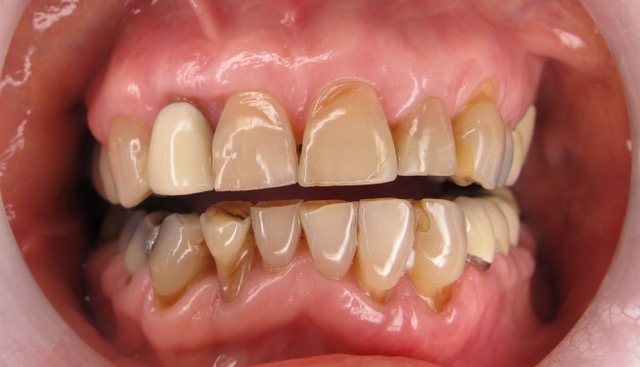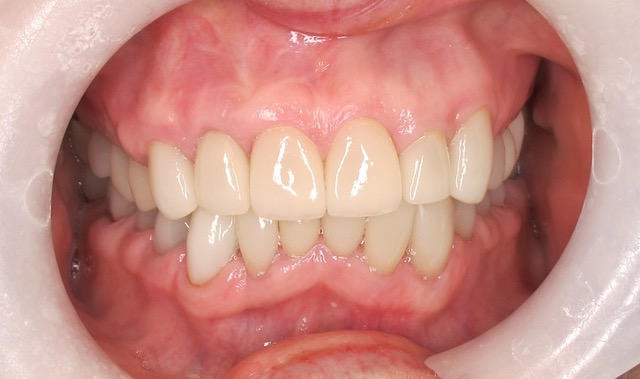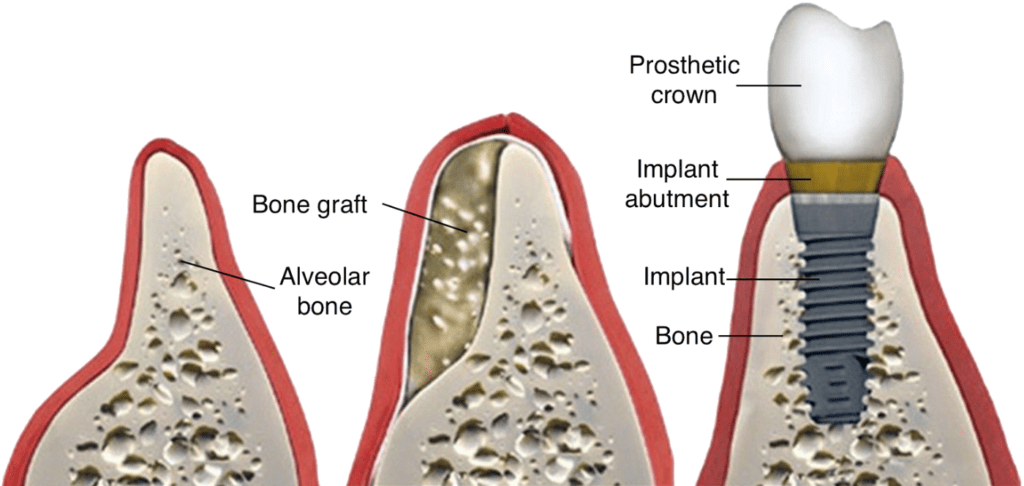

What Is a Bone Graft?
Bone grafting is a surgical procedure to repair, or rebuild, bones through the transplantation of bone tissue. Bone grafts are sometimes required before you get dental implants or some other forms of restorative surgery. If your dentist finds that the jaw is too fine or too soft to successfully support an implant, a bone graft is used to insure the longevity and stability of the dental implant.
At Tryon Family Dentistry, our dentists provide bone grafts for patients in need of restorative dentistry. Contact us online or call us today at (919) 626-8292 for our Raleigh office or (919) 759-5732 for our Zebulon office to book your consultation.
How Does the Bone Graft Work?
Once the dentist finishes the bone grafting in Raleigh, NC, your body goes to work. The bone graft serves as a scaffold, which the body uses to grow and regenerate bone tissue. The dentist might combine this procedure with platelet-rich plasma to encourage healing and tissue regeneration.

Who Needs A Bone Graft?
Dental Implants
Dental implants get all their strength and support from the jaw bone. Once the implant is placed inside a bone, it starts fusing with the surrounding bone in a process known as osseointegration. This may take anywhere from three to six months, depending on the site of the implant, the condition of the jaw bone, and the overall patient health.
A healthy jaw bone with adequate height and thickness is absolutely necessary for a successful implant. Without an adequate amount of bone, a dental implant procedure is impossible.
Periodontal Disease
If periodontal disease is left untreated it can eat away at the bone leading to tooth loss. During this procedure, the dentist removes the infected gum tissue, rough tooth surfaces, and bacteria-covered calculus before placing the bone graft. The bone graft helps repair the damage caused by periodontal disease. It also helps increase the odds of the teeth remaining in place.
Tooth Extraction
When your dentist extracts a tooth, they leave behind an open socket. As the soft tissues of the mouth heal at the extraction site, they close over this opening. The bone then shrinks, reducing the quantity of bone available to support the neighboring teeth.
Over time, the facial profile changes. This change occurs as the jaw thins. The cheeks may appear sunken. A bone graft prevents this from happening.
The bone graft fills the socket and integrates with the jawbone. Over time, bone density increases. You may choose to have an implant once this process is complete.
Bone Grafts and Dentures
Implant-supported dentures continue to increase in popularity. If your dentist recommends this option to replace your conventional dentures or to address tooth loss, you may need a bone graft. This oral surgery prepares the jaw to accept implant-supported dentures, much as it does a single dental implant.
Preparing for a Bone Graft
The Surgical Procedure
The dentist will numb the area prior to the oral surgery. Once the area is numb, they make a small incision in the gum and fold the gum tissue back. Doing so exposes the jawbone.
The next step involves cleaning and disinfecting the surgical site before placing the bone graft. The dentist might cover the graft with a membrane to protect it. The dentist then repositions the gum tissue and closes the incision with stitches.
How Long Is Recovery?
After your grafting surgery has taken place, the initial recovery period will be about two weeks.
Following the Bone Graft
Immediately following the bone graft, you may have some pain and discomfort. Some people find the surgical site swells and they have bruising. All are normal and will disappear in a few days.
Use pain relievers to address the pain and discomfort. Your dentist may provide you with antibiotics and a prescription mouth rinse. Take all medications as directed.
Following the procedure, you may find small bone fragments in the mouth. They look like salt or sand. Alert the dentist, as they may want to see you and ensure the surgical site is healing properly.
Most people remain awake during the bone graft. If you fear the dentist, ask if sedation is an option. Your dentist may provide oral sedation, nitrous oxide, or IV sedation. In rare cases, patients need general anesthesia. Your dentist will work with you to ensure the procedure is a success, so discuss questions and concerns with them.
Tryon Family Dentistry provides a full range of dental services, including bone grafts. Schedule your appointment today! Reach out to our Raleigh office at (919) 626-8292 or are Zebulon office at (919) 759-5732. You can also request an appointment online.
What Is Invisalign?
Instead of relying on metal brackets and wires to move teeth, Invisalign uses clear plastic aligners custom designed for each patient’s individual treatment plan. The aligners are designed to fit snugly over your teeth so they don’t interfere with your normal activities or your speech. Because they are clear, they are hardly noticeable and provide the utmost discretion during treatment.







